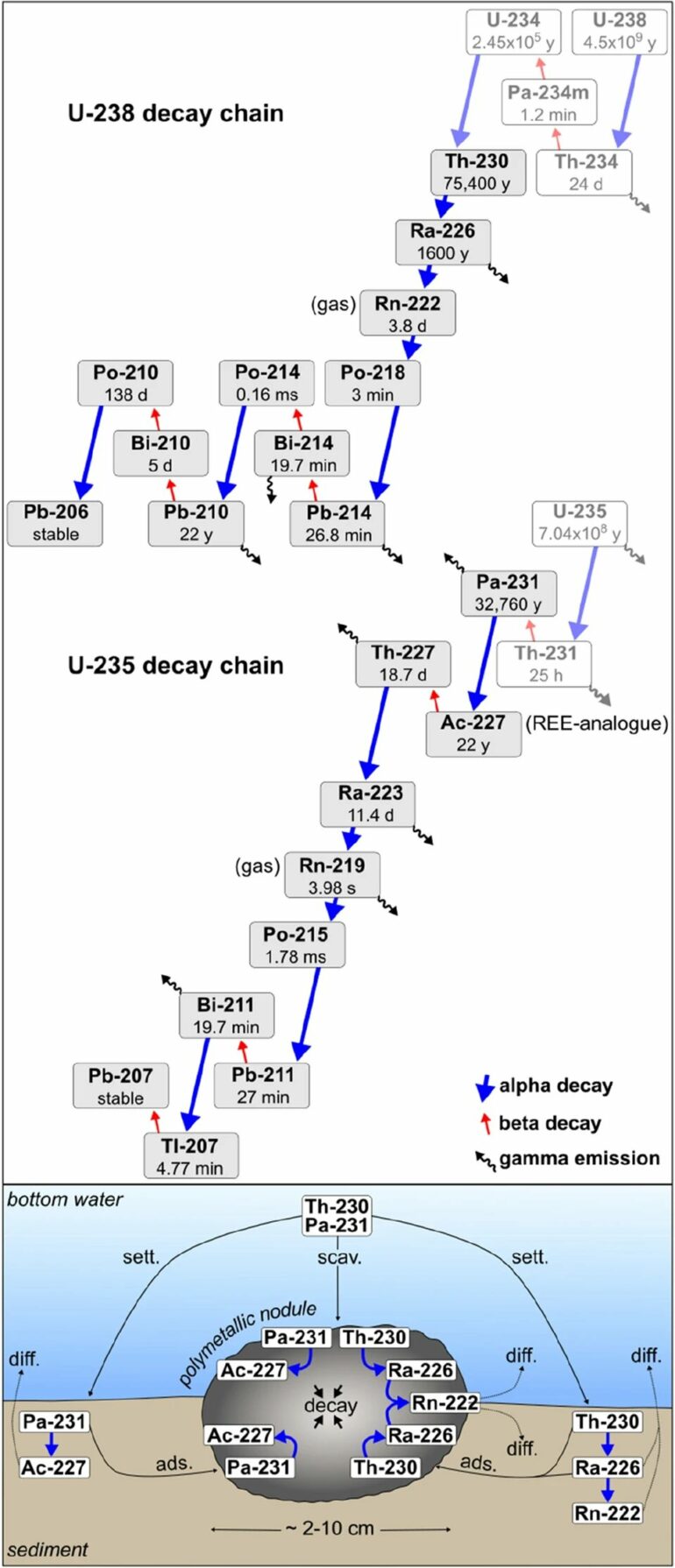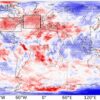by Roland Koch, Alfred-Wegener-Institut, Helmholtz-Zentrum für Polar- und Meeresforschung
Manganese nodules at the bottom of the deep sea contain a wealth of valuable metals that are vital to the electronics and steelmaking industries. Accordingly, these sectors and many countries have pinned their hopes on deep-sea mining to meet the growing demand for raw materials like cobalt and rare-earth elements.
In a study just released in the journal Scientific Reports, experts from the Alfred Wegener Institute show that such activities could not only have ecological impacts, but also pose health hazards, for example, in connection with the industrial mining and processing of the nodules. According to their findings, in some cases, the radioactivity of radium-226 in the nodules exceeds the safe limit defined in the German Strahlenschutzverordnung (Radiation Protection Ordinance) 100- to 1,000-fold.
Large areas of the ocean floor are covered with polymetallic nodules and crusts. The potato-sized manganese nodules can be found in all oceans, especially in the Pacific Ocean, at water depths between 4,000 and 6,000 meters. Formed over millions of years, they contain valuable metals like copper, nickel, cobalt and rare-earth elements—in other words, a range of elements required for the manufacture of electronic products like computers, smartphones, batteries, magnets, motors and high-tech components.
Accordingly, manganese nodules and deep-sea mining have increasingly gained the attention of industries and politicians over the past several years.
Particularly large quantities of manganese nodules can be found in the deep ocean of the Clarion Clipperton Zone in the North Pacific Ocean between Mexico and Hawaii. Several countries—including the Federal Republic of Germany—have secured exploration licenses for the zone, entitling them to first gather reference data in the license areas and, on this basis, assess the potential ecological impacts of commercial deep-sea mining of manganese nodules.
In July 2023, the International Seabed Authority (ISA) plans to define concrete regulations for their industrial mining.
“Through the Joint Programming Initiative Oceans projects ‘MiningImpact’ and ‘MiningImpact2’ … and as part of an international consortium bringing together more than 30 partner institutes, we’ve been investigating the potential impacts of deep-sea mining on the habitats and ecosystems of the sediments and water column in the Pacific Ocean since 2015,” explains Prof Sabine Kasten, who leads the MiningImpact subprojects at the Alfred Wegener Institute, Helmholtz Centre for Polar and Marine Research (AWI).
“Our new study on the radioactivity of manganese nodules demonstrates that, beyond the consequences for marine ecosystems, there could be human health hazards in connection with mining and processing of manganese nodules, and the use of products manufactured on this basis. It’s imperative that this aspect is considered in all future planning.”
For their study, which was just released in the journal Scientific Reports, the AWI experts assessed manganese nodules



